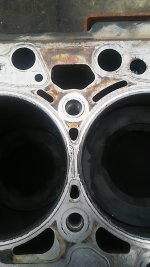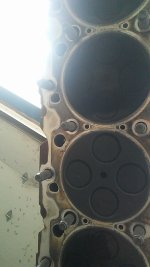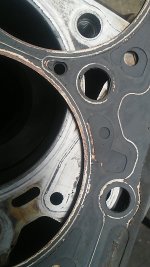Mark Nixon
No Savior among the flesh
Please look at the pics attached.
Picked up a 2008 engine as a core, as my standard procedure, I removed the head to find only that #1 and #5 cylinder pistons were not sooty and have an almost steam washed look to them.
The cylinders themselves are totally untouched.
Upon closer inspection, I find that the head has been replaced, as well as surfaced.
Do you guys agree that this could be a simple failure to re-torque properly?
It wasn't studded, they re-used the headbolts.
Mark.
Picked up a 2008 engine as a core, as my standard procedure, I removed the head to find only that #1 and #5 cylinder pistons were not sooty and have an almost steam washed look to them.
The cylinders themselves are totally untouched.
Upon closer inspection, I find that the head has been replaced, as well as surfaced.
Do you guys agree that this could be a simple failure to re-torque properly?
It wasn't studded, they re-used the headbolts.
Mark.





